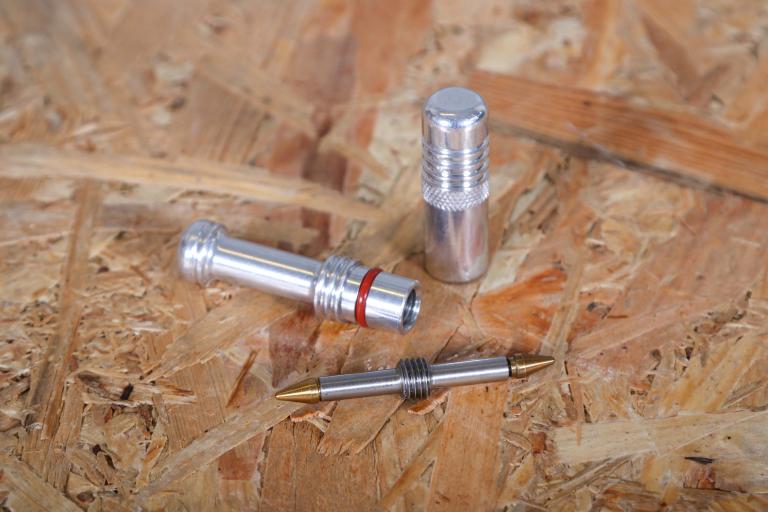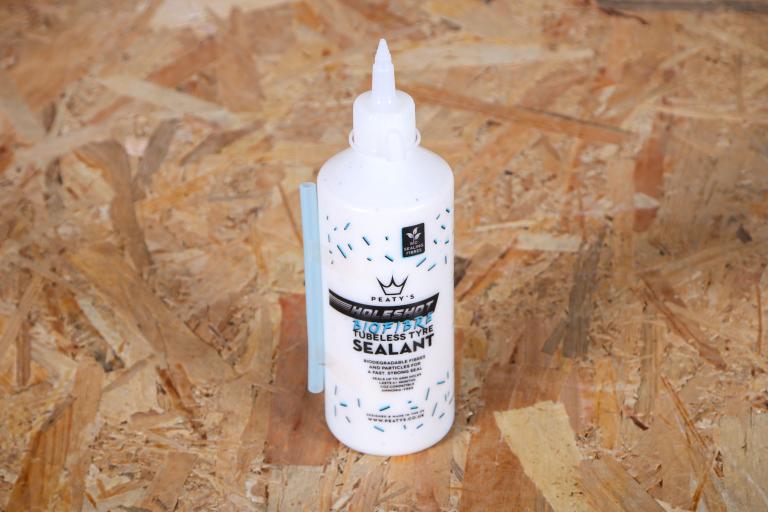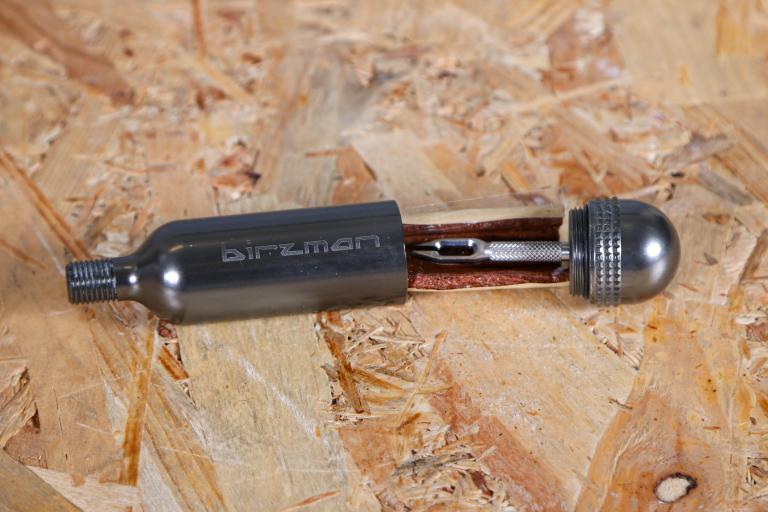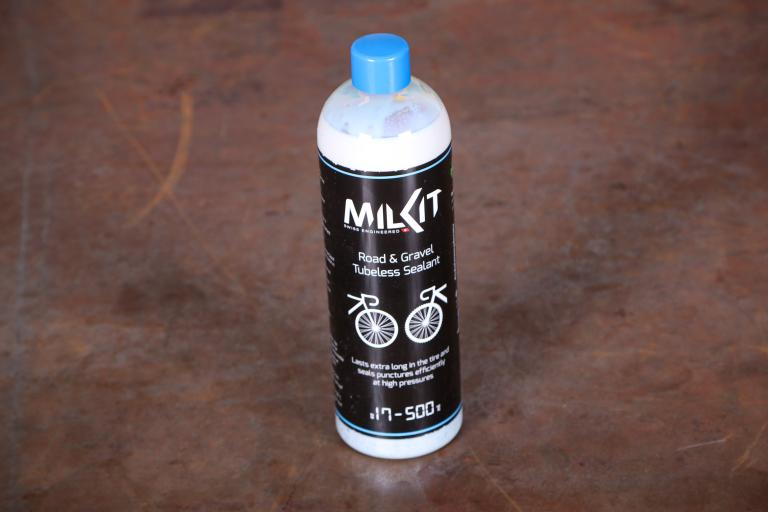- News
- Reviews
- Bikes
- Accessories
- Accessories - misc
- Computer mounts
- Bags
- Bar ends
- Bike bags & cases
- Bottle cages
- Bottles
- Cameras
- Car racks
- Child seats
- Computers
- Glasses
- GPS units
- Helmets
- Lights - front
- Lights - rear
- Lights - sets
- Locks
- Mirrors
- Mudguards
- Racks
- Pumps & CO2 inflators
- Puncture kits
- Reflectives
- Smart watches
- Stands and racks
- Trailers
- Clothing
- Components
- Bar tape & grips
- Bottom brackets
- Brake & gear cables
- Brake & STI levers
- Brake pads & spares
- Brakes
- Cassettes & freewheels
- Chains
- Chainsets & chainrings
- Derailleurs - front
- Derailleurs - rear
- Forks
- Gear levers & shifters
- Groupsets
- Handlebars & extensions
- Headsets
- Hubs
- Inner tubes
- Pedals
- Quick releases & skewers
- Saddles
- Seatposts
- Stems
- Wheels
- Tyres
- Health, fitness and nutrition
- Tools and workshop
- Miscellaneous
- Cross country mountain bikes
- Tubeless valves
- Buyers Guides
- Features
- Forum
- Recommends
- Podcast
review
 2022 Squirt Seal Tyre Sealant with Beadblock
2022 Squirt Seal Tyre Sealant with Beadblock£34.99
VERDICT:
Reasonably effective sealant that lasts well and is available in bulk
Available in bulk
Works on lots of different sized/pressure tyres
Seals up to 6mm holes
More expensive than alternatives
Slower to seal than some
Can't apply sealant through valve from 1L bottle
Weight:
1,170g
Contact:
At road.cc every product is thoroughly tested for as long as it takes to get a proper insight into how well it works. Our reviewers are experienced cyclists that we trust to be objective. While we strive to ensure that opinions expressed are backed up by facts, reviews are by their nature an informed opinion, not a definitive verdict. We don't intentionally try to break anything (except locks) but we do try to look for weak points in any design. The overall score is not just an average of the other scores: it reflects both a product's function and value – with value determined by how a product compares with items of similar spec, quality, and price.
What the road.cc scores meanGood scores are more common than bad, because fortunately good products are more common than bad.
- Exceptional
- Excellent
- Very Good
- Good
- Quite good
- Average
- Not so good
- Poor
- Bad
- Appalling
Squirt Seal Tyre Sealant can be used on a variety of tyres including high-pressure road rubber. When combined with the separate bottle of BeadBlock granules it matched its claims of sealing holes up to 6mm, but was slower to do so than some of the competition. In this one-litre bottle size it's also more expensive than alternatives, but is available in bulk at a more attractive price.
Squirt Seal is designed to be used on all kinds of bikes, from fat tyre mountain bikes to the high-pressure requirements of road. The tyre you're using will dictate how much sealant you need, but Squirt recommends 60-80ml for road applications, 70-90ml for gravel and 100-120ml for 29er mountain bikes. We often find that manufacturers' recommendations are on the low side – you get more applications per bottle that way! – and with this I consistently found I was using the upper end of the recommended amount to get a good coating on the inside of the tyre.
Squirt Seal differs from many sealants in that you get it in two parts, the thin latex-based 'milk' in one bottle and the larger particle BeadBlock granules in another. Initially I thought this was a bit of a pain and just added another step, but it doesn't exactly take long to tip a capful of granules into the already unseated tyre, and the positive of this method is that you don't end up with all the clogging particles being left at the bottom of the bottle; they can't do much from in there and with some sealants seem reluctant to leave the bottle even with aggressive shaking.
When combined, the two-part sealant is claimed to plug up to 6mm holes and I found this perfectly plausible. During testing it sealed multiple road punctures on my 28mm tyres at 72psi, with the only trace being the sealant trail splattered up my seat tube.
I was also pleased with the performance on my gravel bike which I was running at 45psi, where it plugged a larger 6mm hole.
The trail of sealant did indicate that Seal is slower to plug holes than some other sealants I've used, namely Silca's Ultimate and Muc-Off's No Puncture sealant. When using those, the tyre would typically retain enough pressure to continue riding, but with the Squirt I found that a roadside top up of air was necessary on all but one occasion.
> 9 things they don’t tell you about tubeless tyres
If you're riding somewhere you're particularly prone to getting punctures, Squirt says you can chuck in some additional BeadBlock particles to further increase the sealant's capabilities. Whether this will reduce the lifespan of the sealant further, I can't say; Squirt says it'll last seven months with no BeadBlock added, but doesn't say how long it'll last once it's added (we've asked). So far, I've been using the sealant for two months and it's holding up well.
Squirt Seal is available in three different sizes, 150ml, this 1L bottle and a 5L bulk bottle. The 150ml bottle already contains the BeadBlock granules and is the only size with the ability to be applied through the valve. With the larger two bottles it's recommended that you unseat the tyre and chuck it in that way.
To aid application the 1L bottle has markers at every 125ml except at the top, where an additional marker would come in handy.
Value
At £35.99 for the 1L bottle with BeadBlock granules, it's reasonable value when compared with those only available in smaller bottles, but against similar sizes it's on the expensive side. Muc-Off Tubeless Sealant that I mentioned earlier, for example, is £29.99 for a litre, while Hutchinson Protect'Air Max is cheaper still at £24.95 per litre.
If you've got lots of tyres set up tubeless, then Squirt Seal is also available in 5L bottles for £84.99. That works out at about £17 per litre which makes it significantly better value, especially as much of the competition isn't available in larger amounts.
Conclusion
Overall, Squirt Seal is a mixed bag. I'm confident that it lives up to its claims of sealing punctures up to 6mm in a variety of different tyres, but in my experience it's slower to do so than the competition. I'm a fan of the BeadBlock granules coming separately as it means you can tune the quantity you put in depending on conditions, and I usually opt to apply sealant by unseating the tyre anyway. In this size bottle, though, it's outperformed by the competition both in terms of sealing time and price; in the bulk 5 litre option, the price makes it a much more attractive offering.
Verdict
Reasonably effective sealant that lasts well and is available in bulk
road.cc test report
Make and model: Squirt Seal Tyre Sealant
Size tested: 1 Litre
Tell us what the product is for and who it's aimed at. What do the manufacturers say about it? How does that compare to your own feelings about it?
Squirt says its sealant "provides superior puncture sealing properties while boasting a long lifespan and environmentally non-hazardous formulation. Like all Squirt Cycling Products, Squirt SEAL Tyre Sealant with BeadBlock® has already been extensively tested in racing conditions and Squirt Cycling Products® is confident it will enhance your cycling experience."
It works in a whole range of tyres making it suitable for lots of riders, though it's not class leading. It's also expensive in smaller quantities but is also available in bulk and much better value.
Tell us some more about the technical aspects of the product?
From Squirt:
Available in 3 sizes: 150ml, 1ltr, 5ltr
Key Factors: Ammonia Free
Longer lasting
Easier to clean
Minimal to zero bioaccumulation in the environment
Multi-method Sealing: Latex, Microfibres, BeadBlock Granules
Contains corrosion inhibitors
Seals punctures from objects with a 6mm diameter (Squirt Sealant with BeadBlock®)
Will not dry out prematurely or permit tyre walls to stick together
Suitable for use from -20 °C to 40 °C
Rate the product for performance:
6/10
Rate the product for durability:
8/10
No early signs of drying out, as some sealant can.
Rate the product for value:
5/10
In comparison with this 1L size, there are cheaper sealants available, but it is one of the very few available in bulk (5L) which is better value.
Tell us how the product performed overall when used for its designed purpose
Offers reasonable puncture resistance, although not the fastest to fully seal. It does appear to last well within the tyre, not drying out too quickly.
Tell us what you particularly liked about the product
The Beadblock particles being separate means you don't end up with them glooping in the bottom of the bottle.
Tell us what you particularly disliked about the product
The fact that it's slower to seal punctures than others meant I had to add air at the roadside.
How does the price compare to that of similar products in the market, including ones recently tested on road.cc?
Compared with sealants in smaller quantities it's competitive in £ per litre, but expensive when compared with other 1L bottles.
Did you enjoy using the product? Yes
Would you consider buying the product? I would consider buying it in the 5L size.
Would you recommend the product to a friend? Yes, again in the 5L size.
Use this box to explain your overall score
This sealant has lasted well and does seal the holes it claims to, but is slower to do so than the competition. It can be used at high pressures, but in this bottle size it's quite an expensive option. It's 'quite good'.
About the tester
Age: 23
I usually ride: Specialized venge pro 2019 My best bike is:
I've been riding for: Under 5 years I ride: Every day I would class myself as: Expert
I regularly do the following types of riding: road racing, time trialling, cyclo cross, commuting, club rides, sportives, general fitness riding, mtb,
Jamie has been riding bikes since a tender age but really caught the bug for racing and reviewing whilst studying towards a master's in Mechanical engineering at Swansea University. Having graduated, he decided he really quite liked working with bikes and is now a full-time addition to the road.cc team. When not writing about tech news or working on the Youtube channel, you can still find him racing local crits trying to cling on to his cat 2 licence...and missing every break going...
Latest Comments
- Simmo72 2 sec ago
TNT can sit on my seatpost and swivel. Not giving a penny to the vile bean counters.
- Johny 8 min 36 sec ago
Hey Surrey rider do you even know where Hebdon Bridge is? Have you ever been there? Yeah thought not. Soft southern Jessie , we welcome your opinion.
- David9694 1 hour 39 min ago
Dawlish driver suffered seizure before smashing into wall...
- C3a 1 hour 49 min ago
I agree. Off to sign.
- themuffle 2 hours 2 min ago
With both Hunt and Scribe, I really think you'd be mad to get wheels from anybody else.
- Sriracha 2 hours 42 min ago
Weight is a problem when it costs you in energy on the uphill which is lost on the downhill, or lost in braking. But if that energy can be...
- ktache 3 hours 33 min ago
And because they are so likely to flip and are heavier they have to have stronger and wider A pillars which reduces visibility.
- MatzeLoCal 3 hours 38 min ago
What amazes me most is how small the north american market is....
- bikes 3 hours 40 min ago
"perhaps unavoidable", as gently easing off on the accelerator pedal for 2 seconds would obviously be out of the question.




Add new comment
5 comments
The bead block granules are ceramic material, based on their MSDS. Essentially, they're inert and won't have any positive or negative effect on the longevity of the sealant. One strange effect is that if you rotate the wheel, you can actually hear them falling/slushing inside the tire. (When riding, you fortunately don't hear a thing).
The liquid is quite thin but if you have an injector you can easily spritz it in through the valve hole to replenish. The beads don't clump together (contrary on what happens in many fiber-based sealants), nor are they 'consumed' under normal circumstances, so no need to replenish those when topping up.
I like the idea, jury's out on the effectiveness, no flats yet, touch wood.
I just swapped to winter tires and removed those mounted with Squirt now 4 months ago (almost to the day). In those 4 months I'm aware of one rear puncture that was sealed up, there may have been more and for sure there are nicks on the tires but I didn't notice any leaks.
When mounting them I had added 80 ml/tire. This was bang in the middle of their 'gravel' recommendation.
First thought when unseating the front tire was 'wtf did it all go?' until I noticed a small puddle of sealant at the bottom, certainly no more than 15 ml or so. Rear tire was worse with barely 2 teaspoons of this, watery liquid remaining. The interior rolling surface of the tires was coated with a thin layer of coagulated latex, no real 'boogers'. The granules were still present and it didn't look like if the sealant had coagulated around them.
To be honest, I'm not sure if what remained would have done much good in case of a puncture, to the extent that I can judge, most of the sealing capacity had gone from what remained. Otoh: no punctures except for the one that was sealed and the tires kept air admirably. My bike is kept either in my office or my apartment where the temperature is a constant 21 centigrade.
I mounted my winter tires, tipped in granules but also added a generous 105 ml/tire (these are 622X36 tires). Imo that's a more realistic number than what Squirt states. To be continued.
During that record breaking hot bit we had my Orange endurance seal completely dried up. Never happened before. She was being left outside during the working day and the flat didn't go much below 30 for a while.
Were you doing much riding at the 40 degrees we had?
In previous years, I worked to checking about every six months on the basis that a lot of these products were being used in America or mainland Europe where they are expecting high temperatures so Blighty weather should be nicely in the middle, not damaged by freezing, and not vulcanised in the heat, but the hot spell had me topping up a bit for peace of mind. Fortunately, I have a garage to keep bikes in and it is east facing, so doesn't get too cooked in hot weather. A garden shed is a tyre killer generally, they get stupidly hot in summer and too cold in winter.
Yes, the bike is my daily commuter, I clock around 50 km/day, every day of the week regardless of weather. And it did get bloody hot here. In the morning I ride early (start out at 5:30) but that means that I usually ride back around 1500.
What I did notice (but unsure if there's a causal relationship) is that after the cold snap we had here beginning of December where I rode to work in -8 centigrade for 4 days, the tires started losing air faster. Nothing dramatic but where I topped up once every 2 weeks, I had to top up every 5 days. Didn't remove the tires to inspect but just added another 60 ml/tire and everything was good again. Did it degrade in the cold? For sure it didn't evaporate in those temps.